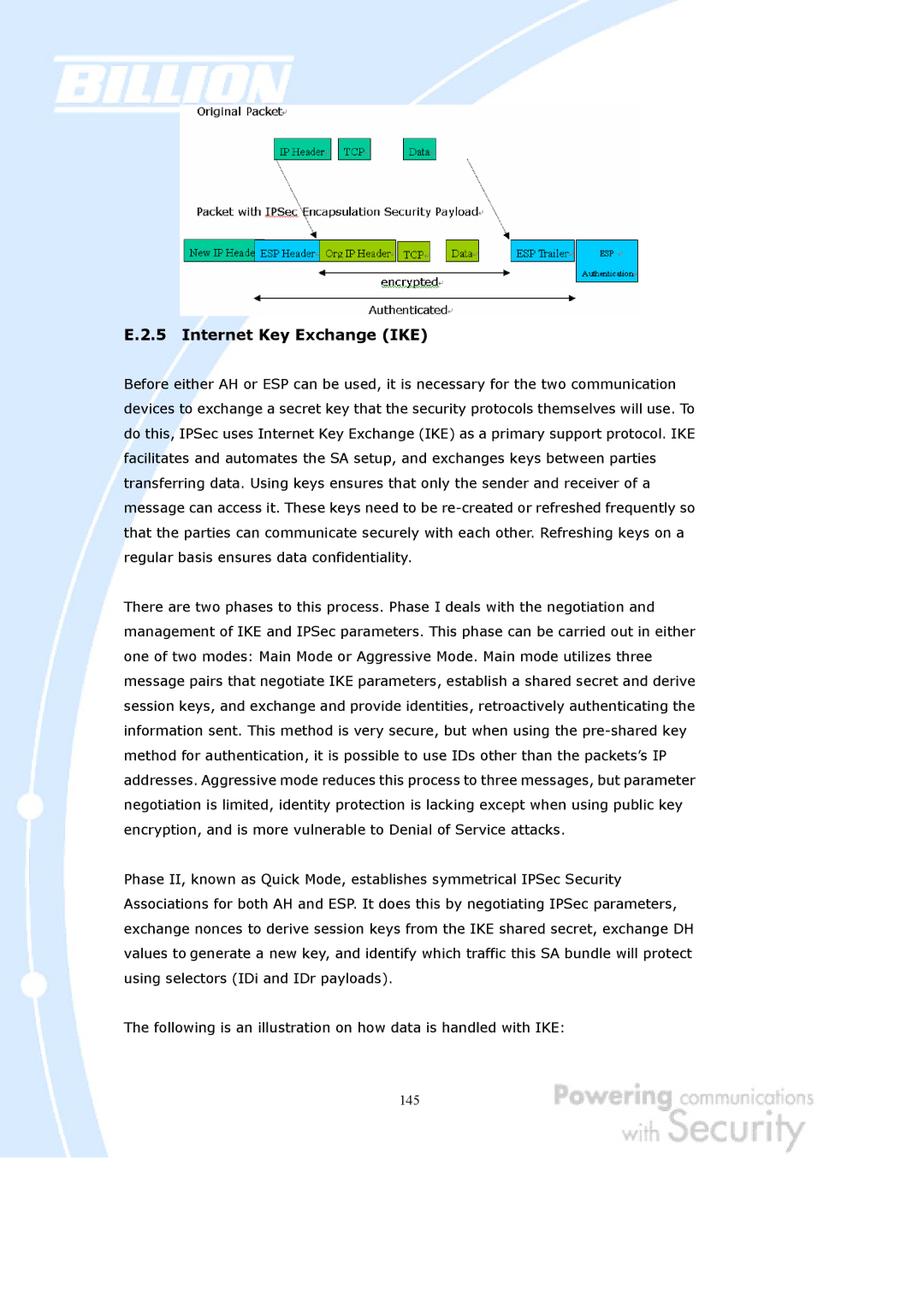
E.2.5 Internet Key Exchange (IKE)
Before either AH or ESP can be used, it is necessary for the two communication devices to exchange a secret key that the security protocols themselves will use. To do this, IPSec uses Internet Key Exchange (IKE) as a primary support protocol. IKE facilitates and automates the SA setup, and exchanges keys between parties transferring data. Using keys ensures that only the sender and receiver of a message can access it. These keys need to be
There are two phases to this process. Phase I deals with the negotiation and management of IKE and IPSec parameters. This phase can be carried out in either one of two modes: Main Mode or Aggressive Mode. Main mode utilizes three message pairs that negotiate IKE parameters, establish a shared secret and derive session keys, and exchange and provide identities, retroactively authenticating the information sent. This method is very secure, but when using the
Phase II, known as Quick Mode, establishes symmetrical IPSec Security Associations for both AH and ESP. It does this by negotiating IPSec parameters, exchange nonces to derive session keys from the IKE shared secret, exchange DH values to generate a new key, and identify which traffic this SA bundle will protect using selectors (IDi and IDr payloads).
The following is an illustration on how data is handled with IKE:
